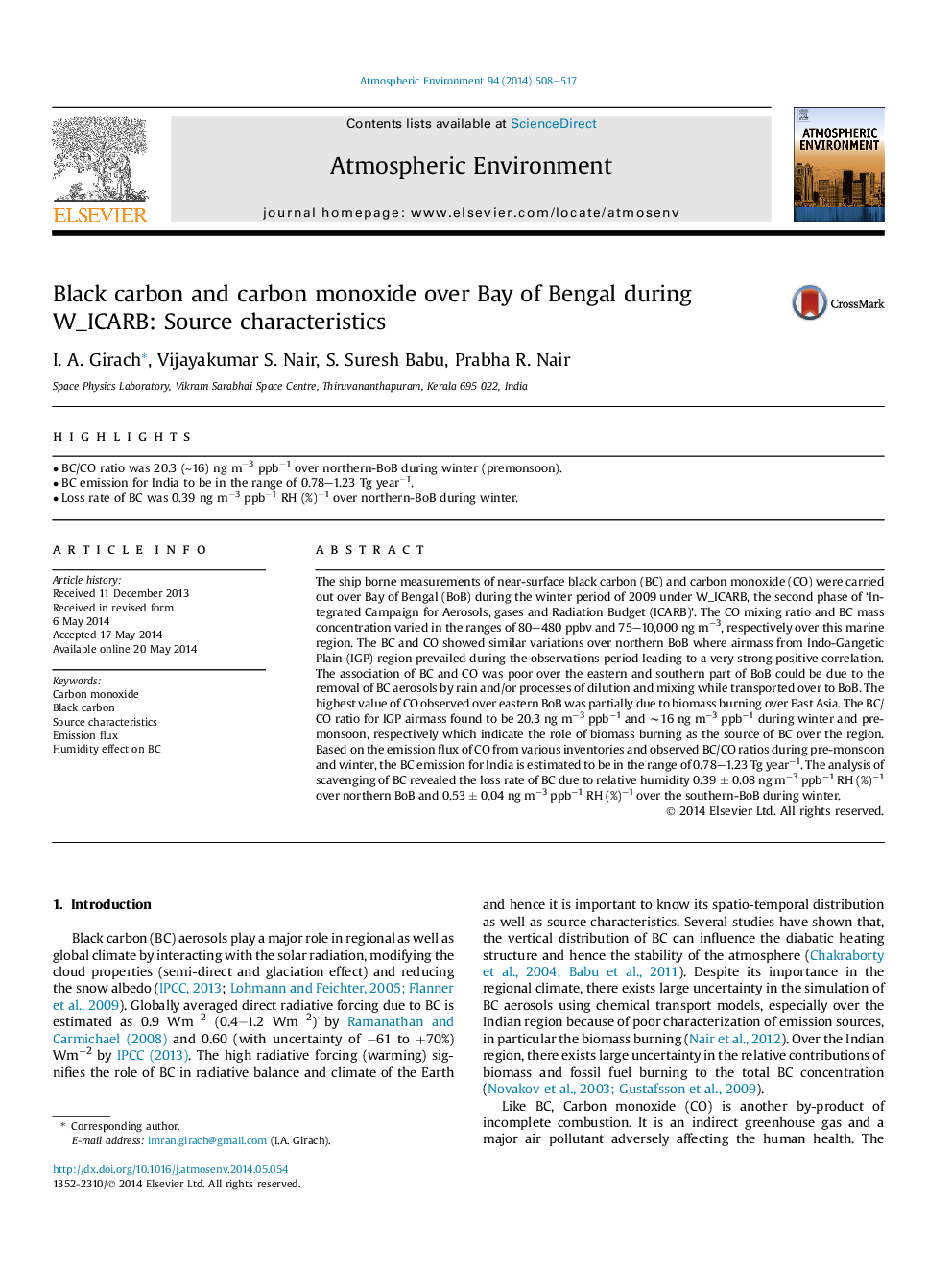| Article ID | Journal | Published Year | Pages | File Type |
|---|---|---|---|---|
| 6339644 | Atmospheric Environment | 2014 | 10 Pages |
Abstract
The ship borne measurements of near-surface black carbon (BC) and carbon monoxide (CO) were carried out over Bay of Bengal (BoB) during the winter period of 2009 under W_ICARB, the second phase of 'Integrated Campaign for Aerosols, gases and Radiation Budget (ICARB)'. The CO mixing ratio and BC mass concentration varied in the ranges of 80-480 ppbv and 75-10,000 ng mâ3, respectively over this marine region. The BC and CO showed similar variations over northern BoB where airmass from Indo-Gangetic Plain (IGP) region prevailed during the observations period leading to a very strong positive correlation. The association of BC and CO was poor over the eastern and southern part of BoB could be due to the removal of BC aerosols by rain and/or processes of dilution and mixing while transported over to BoB. The highest value of CO observed over eastern BoB was partially due to biomass burning over East Asia. The BC/CO ratio for IGP airmass found to be 20.3 ng mâ3 ppbâ1 and â¼16 ng mâ3 ppbâ1 during winter and pre-monsoon, respectively which indicate the role of biomass burning as the source of BC over the region. Based on the emission flux of CO from various inventories and observed BC/CO ratios during pre-monsoon and winter, the BC emission for India is estimated to be in the range of 0.78-1.23 Tg yearâ1. The analysis of scavenging of BC revealed the loss rate of BC due to relative humidity 0.39 ± 0.08 ng mâ3 ppbâ1 RH (%)â1 over northern BoB and 0.53 ± 0.04 ng mâ3 ppbâ1 RH (%)â1 over the southern-BoB during winter.
Related Topics
Physical Sciences and Engineering
Earth and Planetary Sciences
Atmospheric Science
Authors
I.A. Girach, Vijayakumar S. Nair, S. Suresh Babu, Prabha R. Nair,
